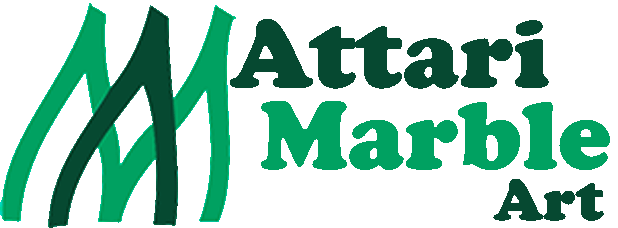1. Introduction: A Legacy Carved in Stone
Marble inlay, known as Parchin Kari in India and Pietra Dura in Italy, is a centuries-old art form that involves embedding semi-precious stones into marble surfaces to create intricate designs. What began as an exclusive art for palaces and places of worship has evolved into a highly sought-after craft embraced across the globe. From the grand white domes of the Taj Mahal to the elegant flooring in royal mansions, marble inlay has always spoken the language of luxury.
Today, this heritage craft is not confined to monuments. It has made its way into modern homes, designer studios, and luxury boutiques through innovative adaptations. Whether it’s a contemporary coffee table with inlaid motifs or intricately patterned modern marble inlay flooring, artisans are continuously finding ways to keep this traditional skill relevant in today’s design landscape.

2. Cultural Significance: A Global Artistic Heritage
Marble inlay holds profound cultural importance across various regions:
India: The Mughal emperors, particularly Shah Jahan, patronized this art, leading to masterpieces like the Taj Mahal. Today, Agra remains a hub for skilled artisans preserving this legacy. Modern-day craftspeople in India continue to train in family-run workshops that date back generations.
Italy: During the Renaissance, Pietra Dura flourished in Florence, adorning churches and palaces with elaborate stone inlays. Italian marble inlay remains celebrated for its sophistication and use of contrasting stone hues.
Middle East: Islamic architecture showcases geometric and floral inlay patterns, reflecting spiritual and artistic values. The use of inlay in mosques and palaces is a testament to its revered place in design history.
3. Techniques and Materials: The Craftsmanship Behind the Art
Creating marble inlay involves several meticulous steps:
Designing: Artisans sketch intricate patterns directly on marble slabs, usually by hand.
Carving: Using fine tools such as chisels (Tankiya and Narzi), they carve small grooves with precision, accommodating even the tiniest stone pieces.
Inlaying: Semi-precious stones like lapis lazuli, turquoise, malachite, and carnelian are individually shaped and set into the carved marble.
Polishing: The piece is polished by hand or machine until the surface becomes smooth and the stones gleam against the marble base.
In modern times, artisans also experiment with waterjet cutters for complex patterns and introduce elements like crushed gemstones and metallic powders. These innovations have helped expand the use of marble inlay into new areas such as contemporary interiors and customized furniture.
4. Unique Adaptations: Marble Inlay in Contemporary Handicrafts
Today’s artisans are pushing the boundaries of tradition by blending marble inlay into everyday decor and lifestyle products:
Furniture: Coffee tables, sideboards, and headboards now feature bold inlaid patterns, creating a focal point in modern interiors.
Modern Marble Inlay Flooring: Designers are increasingly turning to custom inlay floor patterns to add elegance to entryways, halls, and even bathrooms. These floors not only showcase artistry but are also highly durable.
Home Décor: From decorative trays to lamp bases and mirror frames, marble inlay adds a unique artisanal value to functional pieces.
Jewelry & Accessories: Small-scale marble inlay has found its way into wearable art—pendants, brooches, and even cufflinks.
These contemporary applications not only help preserve the craft but also introduce it to a broader, design-savvy audience.
5. Environmental Considerations: Balancing Art with Sustainability
Marble extraction and processing pose environmental challenges such as land degradation, dust pollution, and water waste. Thankfully, the industry is becoming more conscious:
Eco-friendly Processing: Many workshops now use machinery that consumes less water and energy.
Waste Utilization: Studios are turning marble offcuts into new product lines, reducing landfill burden and adding creative value.
Ethical Sourcing: Some artisans are opting for reclaimed or locally sourced marble to lower transportation emissions and encourage regional economies.
As modern marble inlay continues to grow in popularity, sustainable practices ensure that both the environment and traditional craftsmanship are respected.
6. Conclusion: Preserving a Timeless Craft
Marble inlay is more than a decorative technique—it’s a living legacy. In the hands of today’s artisans, this age-old art is experiencing a renaissance. Whether used in majestic floors, detailed tabletops, or minimalist home accents, marble inlay continues to enchant those who value quality, culture, and design.
By supporting these craftspeople and choosing sustainable, handmade items, we help preserve an art form that tells stories across continents and centuries. As the demand for personalized, meaningful interiors rises, marble inlay is poised to remain a centerpiece of timeless beauty.
Explore Custom Marble Inlay Flooring with Attari Marble Art
If you’re looking to add a layer of luxury and history to your interiors, Attari Marble Art offers bespoke modern marble inlay flooring crafted by master artisans. Based in India, we specialize in traditional craftsmanship with a contemporary edge—delivering elegance, durability, and one-of-a-kind artistry to every space.
Whether you want intricate floral patterns, classic motifs, or custom designs tailored to your home, our team works closely with architects, designers, and homeowners to bring your vision to life. Each piece is handcrafted with precision using premium materials and centuries-old techniques.
✨ Ready to transform your floors into timeless works of art? Connect with us today at +91 9414289982 for design consultations and project inquiries.
